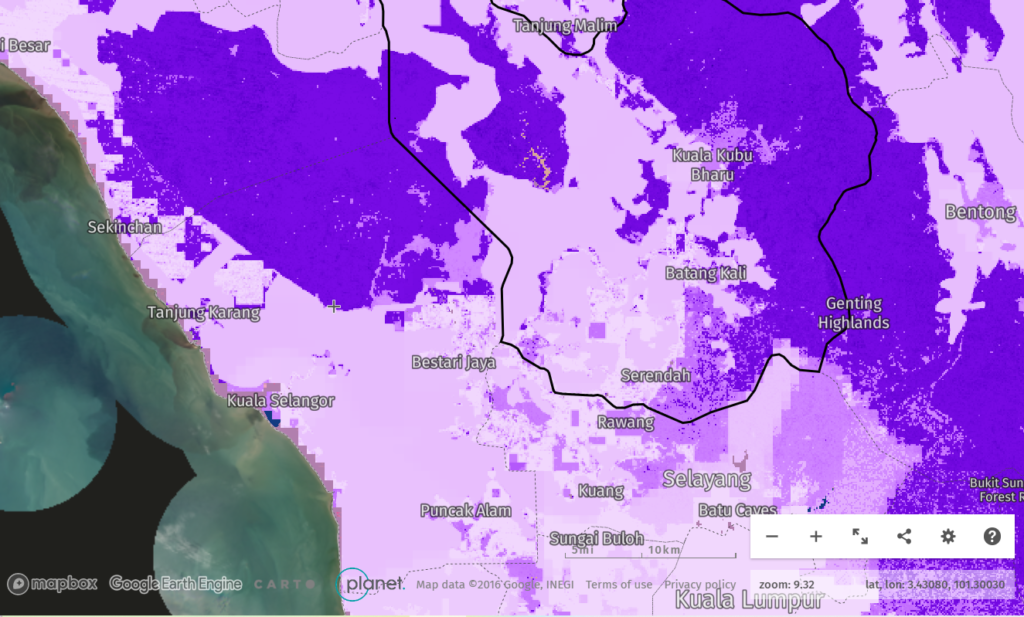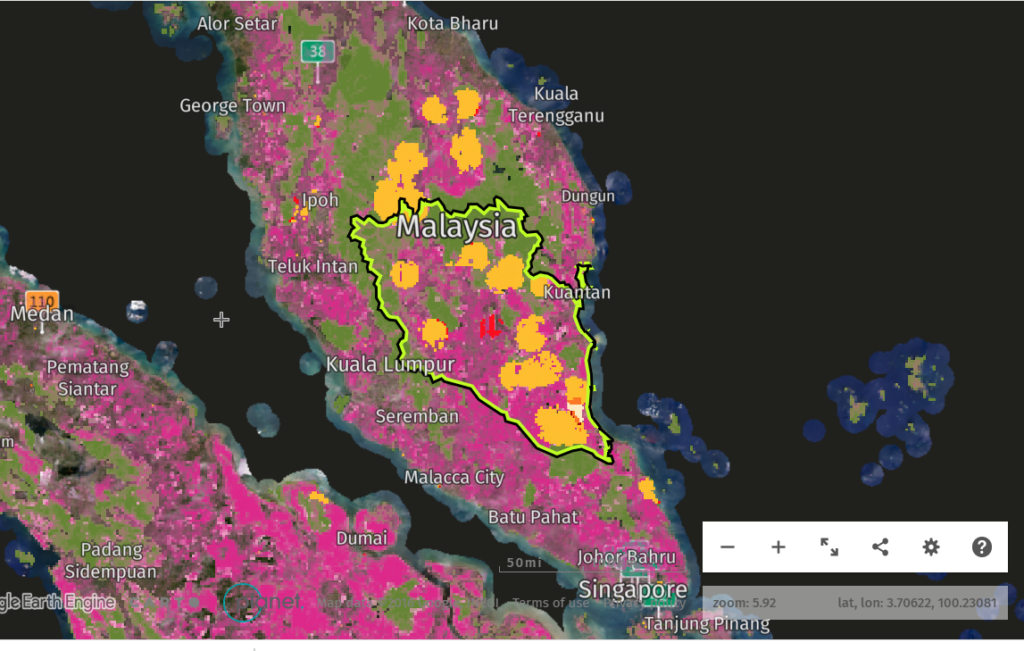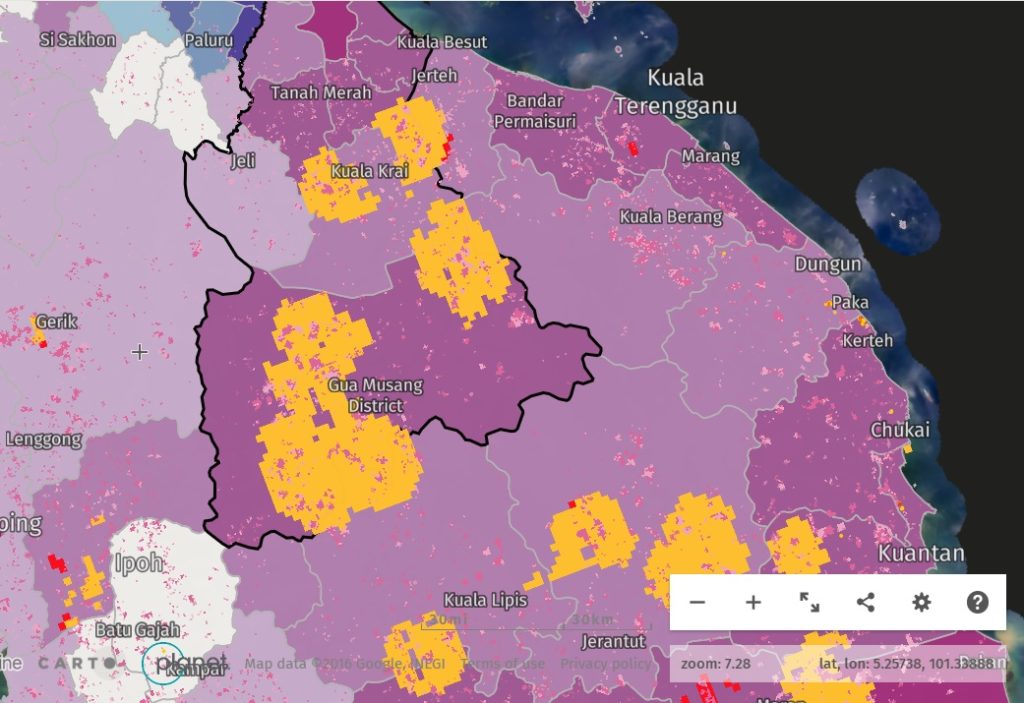
PETALING JAYA, Dec 20 – Land clearing and deforestation have been going on in many states in Peninsular Malaysia without much transparency or proper accountability over the decades, according to an environmentalist.
While there have been the much needed development including major roads, infrastructures as well as property and agriculture, and cash crop plantings taking over the Malaysian rainforests over the years, there have been also large scale illegal logging, plantations, mining, poaching and other activities that have slowly eroded into virgin jungles, unchecked. There have been also the rare admissions of oversight in terms of monitoring and enforcement by relevant authorities.
It is common knowledge that the removal of oxygen-rich trees not only contribute to loss of biodiversity and ecology systems, but also raises carbon emissions, causes air pollution, soil erosion, geological instability with consequential floods and landslides.
Now and then, such activities are also the underlying cause for human tragedies of a significant scale.
While intact forests have been proven to have obvious positive impact on human lives and health, research in this area continues to testify even more deeper links between the physical and mental well-being of human beings and a healthy forest with undisturbed eco systems, says local scientist Teckwyn Lim.
Lim, who is also Associate Professor of Geography, University of Nottingham Malaysia, says the relationship between forest and human health continues to be researched with continued testimony of the positive effects forests have on human health.
Citing a report from MDPI, he said one area of study involves the volatile organic compounds (VOCs) released from trees and their impact on human beings.

Meanwhile, here is a quick round up of the state of deforestation in some parts of the peninsula historically and also more recently based on some satellite detected deforestation alerts from the Global Forest Watch (GFW).
While these are only alerts and not confirmation of a particular activity of deforestation, they give an idea of where forest encroachment could be happening and how closer monitoring is needed. While Malaysia may have been working at recovering its forests, the rate of carbon emission versus capture is lopsided with more emissions.
IN HULU SELANGOR
There were 65,114 deforestation alerts reported in Hulu Selangor between 15th of June 2021 and 16th of December 2022, covering a total of 800ha of which 86% were high confidence alerts detected by a single system and 6.6% were alerts detected by multiple systems.
These comprised 4,294 alerts of highest confidence detection by multiple alert systems and a total of 56,008 detections by a single alert system.
PRIMARY FOREST LOSS IN HULU SELANGOR
From 2017 to 2021, Hulu Selangor lost 444ha of humid primary forest, making up 4.2% of its total tree cover loss in the same time period. Total area of humid primary forest in Hulu Selangor decreased by 0.56% in this time period.
In 2010, Hulu Selangor had 92.7kha of natural forest, extending over 83% of its land area. In 2021, it lost 302ha of natural forest, equivalent to 197kt of CO₂ emissions.
From 2017 to 2021, Hulu Selangor lost 10.5kha of tree cover, equivalent to a 6.9% decrease in tree cover since 2000, and 5.44Mt of CO₂e emissions.
From 2019 to 2021, Hulu Selangor lost 5ha of tree cover from fires and 5.23kha from all other drivers of loss. The year with the most tree cover loss due to fires during this period was 2021 with 2ha lost to fires — 0.11% of all tree cover loss for that year.
IN PAHANG
There were a total of 3,626 deforestation alerts issued by the Global Forest Watch during the week of Nov 30 to Dec 7, this year covering a total of 44.53 hectares, with 13.74 hectares involving primary forest areas.

Graphics courtesy of Global Forest Watch.
IN KELANTAN
In 2010, Kelantan had 823kha of natural forest, extending over 83% of its land area. In 2021, it lost 10.9kha of natural forest, equivalent to 7.43Mt of CO₂ emissions.
There were 1,105,006 deforestation alerts reported in Kelantan between 12th of June 2021 and 13th of December 2022, covering a total of 13.5kha of which 70% were high confidence alerts detected by a single system and 15% were alerts detected by multiple systems.
As for tree cover change, from 2000 to 2020, Kelantan lost 79.5kha or 5.8 percent of its tree cover.
While it gained 23.kha in tree cover, it lost 103kha.
PERAK, KEDAH, TERENGANNU AND JOHOR
Apart from deforestation alerts in Perak, Kedah, Terengannu and Johor, there have been regular forest fire alerts in the states of Kedah and Perak and other states as well.
There were 999,362 deforestation alerts reported in Perak between June 2021 and 13th of December 2022, covering a total of 12.3kha of which 81% were high confidence alerts detected by a single system and 3.7% were alerts detected by multiple systems.
While deforestation alerts only alert of possible damages to primary forest and intact forest areas, they are also good indications that encroachment has happened.
There may be good news yet, as Malaysia continues to pledge its commitment to zero carbon emissions and has made great strides in the area of environment with making environmental, social and governance (ESG) as one of its themes in its Malaysia Plan.
There have been successes but there needs to be more translation of ideas and plans on the grounds, with greater efforts in the areas of forest monitoring, ensuring transparency in the area of Environment Impact Assessment (EIA) reports, strict compliance and foresight when approving developments in sensitive areas like slopes.
–WE